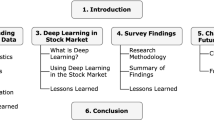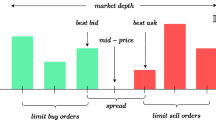Abstract
The volatility in rubber price is a significant risk to producers, traders, consumers and others who are involved in the production and marketing of natural rubber. Such being the case, forecasting the rubber price volatility is desired to assist in decision-making in this uncertain situation. The 2008 Global Financial Crisis caused some disruptions and uncertainties in the future supply or demand for natural rubber and thus leading to higher rubber price volatility. Using ARCH-type models, this paper intends to model the dynamics of the price volatility of Standard Malaysia Rubber Grade 20 (SMR 20) in the Malaysian market before and after the Global Financial Crisis. Additionally, Value-at-Risk (VaR) approach is implemented to evaluate the market risk of SMR 20. Our empirical result denotes the existence of volatility clustering and long memory volatility in the SMR 20 market for both crisis periods. Leverage effect is also detected in the SMR 20 market where negative innovations (bad news) have a larger impact on the volatility than positive innovations (good news) for post-crisis period. When tested with Superior Predictive Ability (SPA) test, FIGARCH model is the best model across five loss functions for short- and long-term forecasts for pre-crisis period. Meanwhile, over post-crisis period, FIGARCH and GJR GARCH indicate the superior out-of-sample-forecast results and better forecasting accuracy over short- and long-term horizons, respectively. In terms of market risk, the short trading position encounters higher risk or greater losses than the long trading position at both 1 and 5 % VaR quantile for pre-crisis period. In contrast, over post-crisis period, long traders of rubber SMR 20 tend to face limited gains but unlimited losses.

Similar content being viewed by others
References
Angabini, A., and S. Wasiuzzaman. 2010. GARCH models and the financial crisis—a study of the Malaysia stock markets. The International Journal of Applied Economics and Finance 5(3): 226–236.
Bai, J., and P. Perron. 1998. Estimating and testing linear models with multiple structural changes. Econometrica 66(1): 47–78.
Bai, J., and P. Perron. 2003. Computation and analysis of multiple structural change models. Journal of Applied Econometrics 18(1): 1–22.
Baillie, T.R., T. Bollerslev, and H.O. Mikkelsen. 1996. Modeling and pricing long-memory in stock market volatility. Journal of Econometrics 73(1): 151–184.
Barlow, C., S. Jayasuriya, and C.S. Tan. 1994. The World rubber industry. London: Routledge.
Bhattacharya, S.N., and M. Bhattacharya. 2012. Long memory in stock returns: A study of emerging markets. Iranian Journal of Management Studies 5(2): 67–88.
Bollerslev, T. 1986. Generalized autoregressive conditional heteroscedasticity. Journal of Econometrics 31(3): 307–327.
Burger, K., and H.P. Smith. 1997. The natural rubber market—review, analysis, policies and outlook, vol. 368. Cambridge: Woodhead Publishing Limited.
Burger, K., Smit H. P., and B. Vogalvang. 2002. Exchange rates and natural rubber prices, the effect of the Asian crisis. In 10th EAAE Congress: exploring diversity in the European agri-food system. Retrieved June 25, 2014. http://ageconsearch.umn.edu/bitstream/24958/1/cp02bu31.pdf.
Daud, M.N. 1984. A forecasting methodology as applied to rubber prices. Journal of Rubber Institute Malaysia 3: 188–203.
Daud, M.N., and M.Y. Shahabuddin. 1988. A statistical forecast of natural rubber. Journal of Natural Rubber Research 3: 69–80.
Engle, R.F. 1982. Autoregressive conditional heteroscedasticity with estimates of the variance of United Kingdom inflation. Econometrica 50(4): 987–1007.
Glosten, R.L., J. Ravi, and D.E. Runkle. 1993. On the relation between the expected value and the volatility of the nominal excess return on stocks. Journal of Finance 48(5): 1779–1801.
Hansen, P.R. 2005. A test for superior predictive ability. Journal of Business and Economic Statistics 23(4): 365–380.
Lim, J. Y. 2002. An evaluation of alternative forecasting models for natural rubber prices. Unpublished PhD dissertation, Curtin University of Technology, Australia.
Ludwig, R.S. 1974. Forecasting short-term saving deposit flows: an application of time series models and a regional analysis. Unpublished Master’s thesis, Massachusetts Institute of Technology.
Manda, K. 2010. Stock market volatility during the 2008 Financial Crisis. Retrieved September 2, 2015. http://w4.stern.nyu.edu/glucksman/docs/Manda2010.pdf.
McKenzie, M., and H. Mitchell. 2002. Generalized asymmetric power ARCH modelling of exchange rate volatility. Applied Financial Economics 12(8): 555–564.
Meyler, A., Kenny, G., and T. Quinn. 1998. Forecasting Irish inflation using ARIMA models, Central Bank of Ireland Technical Paper. Retrieved June 25, 2014. http://mpra.ub.uni-muenchen.de/11359/1/cbi_3RT98_inflationarima.pdf.
Ministry of Plantation Industries and Commodities (MPIC). 2013. Malaysia to launch new strategies for natural rubber industry: reports. Retrieved August 9, 2014. http://www.platts.com/RSSFeedDetailedNews/RSSFeed/Petrochemicals/7662549.
Natural Rubber Industry Report—BSC. 2013. Retrieved August 9, 2014. http://www.bsc.com.vn/Handlers/DownloadReport.ashx?ReportID=674295.
Obi, P., and S. Sil. 2013. VaR and time-varying volatility: A comparative study of three international portfolios. Managerial Finance 39(7): 625–640.
Shamsuddin, M.N. 1992. A short note on forecasting natural rubber prices using a MARMA. The Malaysian Journal of Agricultural Economic 9: 59–68.
Shamsuddin, M.N., and F.M. Arshad. 1990. Composite model for short term forecasting for natural rubber prices. Pertanika 12(2): 283–288.
Sullivan, R., A. Timmermann, and H. White. 1999. Data-snooping, technical trading rule performance, and the bootstrap. Journal of Finance 54(5): 1647–1691.
Tsay, R.S. 2002. Analysis of financial time series. New York: Wiley.
Tse, Y.K. 1998. The conditional heteroscedasticity of the yen-dollar exchange rate. Journal of Applied Economics 13(1): 49–55.
Wei, Y., Y.D. Wang, and D.S. Huang. 2010. Forecasting crude oil market volatility: Further evidence using GARCH-class models. Energy Policy 32(6): 1477–1484.
Wen, X., Y. Wei, and D. Huang. 2012. Measuring contagion between energy market and stock market during financial crisis: A copula approach. Energy Economics 34(5): 1435–1446.
White, H. 2000. A reality check for data snooping. Econometrica 68(5): 1097–1126.
Zhang, Y., and Y. He. 2005. Study of prediction model on grey relational BP neural network. In Proceedings of the fourth international conference on machine learning and cybernetics, 18–21 August 2005, Guangzhou, China.
Acknowledgments
The authors would like to thank anonymous reviewers for their valuable suggestions and helpful comments which have greatly enhanced the quality of this paper. All remaining errors are of ours.
Author information
Authors and Affiliations
Corresponding author
Appendix
Appendix
Pre-crisis
Post-crisis
See Tables 8, 9, 10, 11 and 12.
Rights and permissions
About this article
Cite this article
Goh, H.H., Tan, K.L., Khor, C.Y. et al. Volatility and Market Risk of Rubber Price in Malaysia: Pre- and Post-Global Financial Crisis. J. Quant. Econ. 14, 323–344 (2016). https://doi.org/10.1007/s40953-016-0037-4
Published:
Issue Date:
DOI: https://doi.org/10.1007/s40953-016-0037-4
Keywords
- Rubber price volatility
- Malaysia
- Global financial crisis
- Market risk
- Forecasting performance
- ARCH-type models




